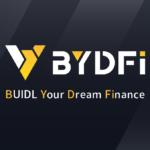Now Reading: Earn Big While Keeping Your Cash Safe: Today’s Best High-Yield Accounts
-
01
Earn Big While Keeping Your Cash Safe: Today’s Best High-Yield Accounts
Earn Big While Keeping Your Cash Safe: Today’s Best High-Yield Accounts
:max_bytes(150000):strip_icc()/FRI-Marjan_Apostolovic-cea2b19792144f09a9794833ad934c85.jpg?ssl=1)
:max_bytes(150000):strip_icc():format(jpeg)/FRI-Marjan_Apostolovic-cea2b19792144f09a9794833ad934c85.jpg)
Key Takeaways
- Good news for savers: The Fed isn’t likely to cut interest rates soon, so today’s strong cash returns are expected to stick around for now.
- Top high-yield savings accounts are offering up to 5.00%, while this week’s best CD rate comes in at an impressive 4.60%.
- Cash held at brokerages and robo-advisors can earn 4.00% or more, and the latest U.S. Treasury yields reach as high as 4.85%.
- Our tables below compare current returns from banks, credit unions, brokerages, robo-advisors, and the U.S. Treasury to help you choose the best option for your cash.
The full article continues below these offers from our partners.
Cash Still Offers Strong, Low-Risk Returns—Some as High as 5.00%
Holding a cash cushion is always a smart move. But in today’s climate of economic uncertainty, driven by President Donald Trump’s shifting tariff policies, a cash reserve can feel more essential than ever. Whether you’re building savings in a bank account or shifting funds out of more volatile investments, it’s worth asking: how hard is your cash working? Different cash strategies offer different yields, and choosing the right one can have a real financial impact.
Fortunately for savers, today’s options remain highly appealing, with returns still supported by the Federal Reserve’s elevated benchmark interest rate. And that favorable backdrop could stick around a while longer. According to the CME Group’s FedWatch Tool, financial markets currently see more than an 80% chance that the Fed won’t issue its first rate cut until the Sept. 17 meeting.
That’s good news for savers, since the rates offered by banks, credit unions, and brokerages tend to closely track the federal funds rate. When the Fed lowers that benchmark, yields on savings, money market, and CD accounts typically decline as well.
Today’s Best Cash Rates From Banks, Brokers, and Treasuries
For a low-risk return that’s still rewarding, today’s top cash investment options fall into three main categories:
- Bank and credit union products: Savings accounts, money market accounts (MMAs), and certificates of deposit (CDs)
- Brokerage and robo-advisor products: Money market funds and cash management accounts
- U.S. Treasury products: T-bills, notes, and bonds, plus inflation-protected I bonds
You can choose a single option or mix and match based on your goals and timeline. Either way, it’s essential to know what each one is currently paying. Below, we break down the top rates in each category as of Friday’s market close, along with how they’ve changed since last week.
Bank and Credit Union Rates
The rates below represent the top nationally available annual percentage yields (APYs) from federally insured banks and credit unions, based on our daily analysis of more than 200 institutions offering products nationwide.
Warning
Note that savings and money market account rates are variable, meaning the bank can lower them at any time. In contrast, CD rates are fixed and guaranteed for the full term of the certificate.
Brokerage and Robo-Advisor Cash Rates
The yield on money market funds fluctuates daily, while rates on cash management accounts are more fixed but can be adjusted at any time.
U.S. Treasury Rates
Treasury securities pay interest through maturity and can be purchased bought from TreasuryDirect or traded on the secondary market through a bank or brokerage. I bonds must be bought from TreasuryDirect and can be held for up to 30 years, with rates adjusted every six months.
Compare All This Week’s Cash Options by Rate
Here’s a summary look at all of the cash vehicles above, sorted by today’s highest rates. Note that the rates shown are the top qualifying rate for each product type.
Choosing the Best Cash Option for Your Goals
Bank and Credit Union Products
Savings Accounts
The most basic place to stash cash is a bank or credit union savings account—sometimes called a high-yield savings account—that lets you add and withdraw money as you please. But don’t assume your primary bank pays a competitive rate. Some banks pay virtually zero interest.
Fortunately, our daily ranking of the best high-yield savings accounts gives you more than 20 options that pay 4.30% to 5.00% APY. Note, however, that savings account rates can change at any time.
Money Market Accounts
A money market account is a savings account that lets you write paper checks. If this is a useful feature to you, compare the best money market accounts.
If you don’t need paper check-writing, choose whichever account type—money market or savings—pays the better rate. The top money market account rate is currently 4.37%. Again, be aware that money market rates are variable, so they can be lowered without warning.
Certificates of Deposit
A certificate of deposit (CD) is a bank or credit union product with a fixed interest rate that promises a guaranteed return for a set period of time. Generally ranging from 3 months to 5 years, CDs offer a predictable return with a rate that cannot be changed for the duration of the term.
But be aware that it’s a commitment with teeth: If you cash in before maturity, your earnings will be dinged with an early withdrawal penalty. Our daily ranking of the best nationwide CDs currently includes 14 options paying at least 4.50%—with a top rate of 4.60% APY.
Brokerage and Robo-Advisor Products
Money Market Funds
Unlike a money market account at a bank, money market funds are mutual funds invested in cash and offered by brokerage and robo-advisor firms. Their yields can fluctuate daily but currently range from 3.94% to 4.21% at the three biggest brokerages.
Cash Management Accounts
For uninvested cash held at a brokerage or robo-advisor, you can have the funds “swept” into a cash management account where they will earn a return. Unlike money market funds, cash management accounts offer a specific interest rate that the brokerage or robo-advisor can adjust whenever it likes. Currently, several popular brokers are paying 3.83% to 4.00% APY on their cash accounts.
U.S. Treasury Products
Treasury Bills, Notes, and Bonds
The U.S. Treasury offers a wide array of short- and long-term bond instruments. Treasury bills have the shortest duration, ranging from 4 to 52 weeks, while Treasury notes have a maturity of 2 to 5 years. The longest-term option is a Treasury bond, which has a 20- or 30-year maturity. Today’s rates on the various Treasury products range from 4.19% to 4.85%.
You can buy T-bills, notes, and bonds straight from TreasuryDirect or buy and sell them on the secondary market at brokerages and banks. Selling a Treasury product allows you to exit before the bond matures. However, you may pay a fee or commission for secondary market purchases and sales, while buying and redeeming at TreasuryDirect—the U.S. Treasury’s online platform for buying federal government securities—has no fees.
You can also buy Treasury ETFs, which trade on the market like a stock. Treasury ETFs have advantages and limitations, which you can read about here.
I Bonds
U.S. Treasury I bonds have a rate that’s adjusted every six months to align with inflation trends. You can redeem an I bond anytime after one year or hold it for as long as 30 years. While you own the bond, your rate will change every six months.
I bond rates just went up on May 1, from 3.11% for bonds issued during the previous six months to 3.98% for new bonds purchased between May 1 and Oct. 31, 2025. For existing I bond holders, your next six-month rate will also increase—by almost a full percentage point. See our story about the recent rate change, including rate tables for different bond dates.
How We Find the Best Savings and CD Rates
Every business day, Investopedia tracks the rate data of more than 200 banks and credit unions that offer CDs and savings accounts to customers nationwide and determines daily rankings of the top-paying accounts. To qualify for our lists, the institution must be federally insured (FDIC for banks, NCUA for credit unions), and the account’s minimum initial deposit must not exceed $25,000. It also cannot specify a maximum deposit amount that’s below $5,000.
Banks must be available in at least 40 states to qualify as nationally available. And while some credit unions require you to donate to a specific charity or association to become a member if you don’t meet other eligibility criteria (e.g., you don’t live in a certain area or work in a certain kind of job), we exclude credit unions whose donation requirement is $40 or more. For more about how we choose the best rates, read our full methodology.













:max_bytes(150000):strip_icc()/GettyImages-2173773452-718d79ce21c740f6bc0f86af0ad7cd7f.jpg?w=1024&resize=1024,1024&ssl=1)
:max_bytes(150000):strip_icc()/GettyImages-1246652809-9232cebf0938444191353cddfc926f8e.jpg?w=1024&resize=1024,1024&ssl=1)













:max_bytes(150000):strip_icc()/GettyImages-2173773452-718d79ce21c740f6bc0f86af0ad7cd7f.jpg?w=150&resize=150,150&ssl=1)
